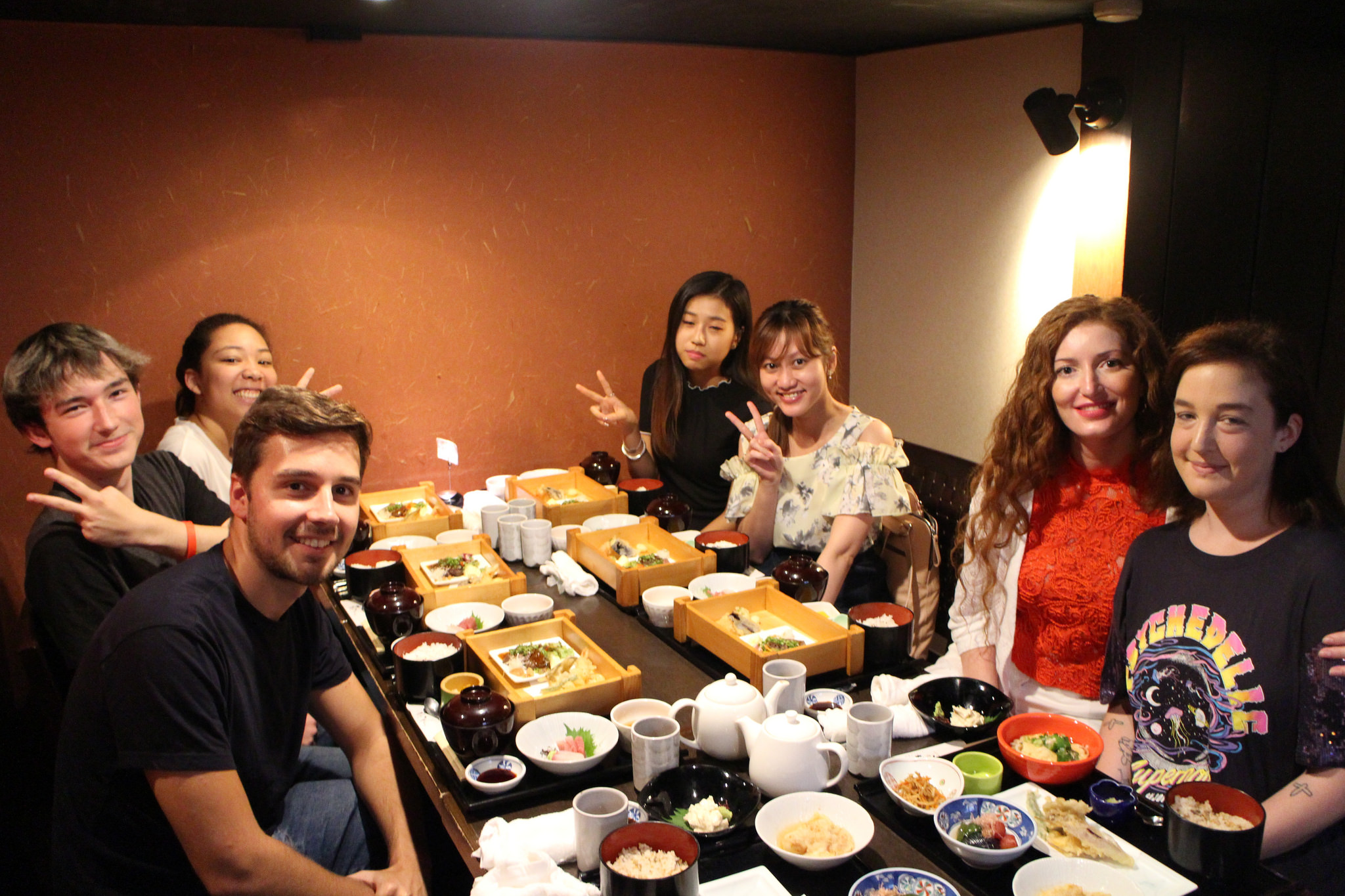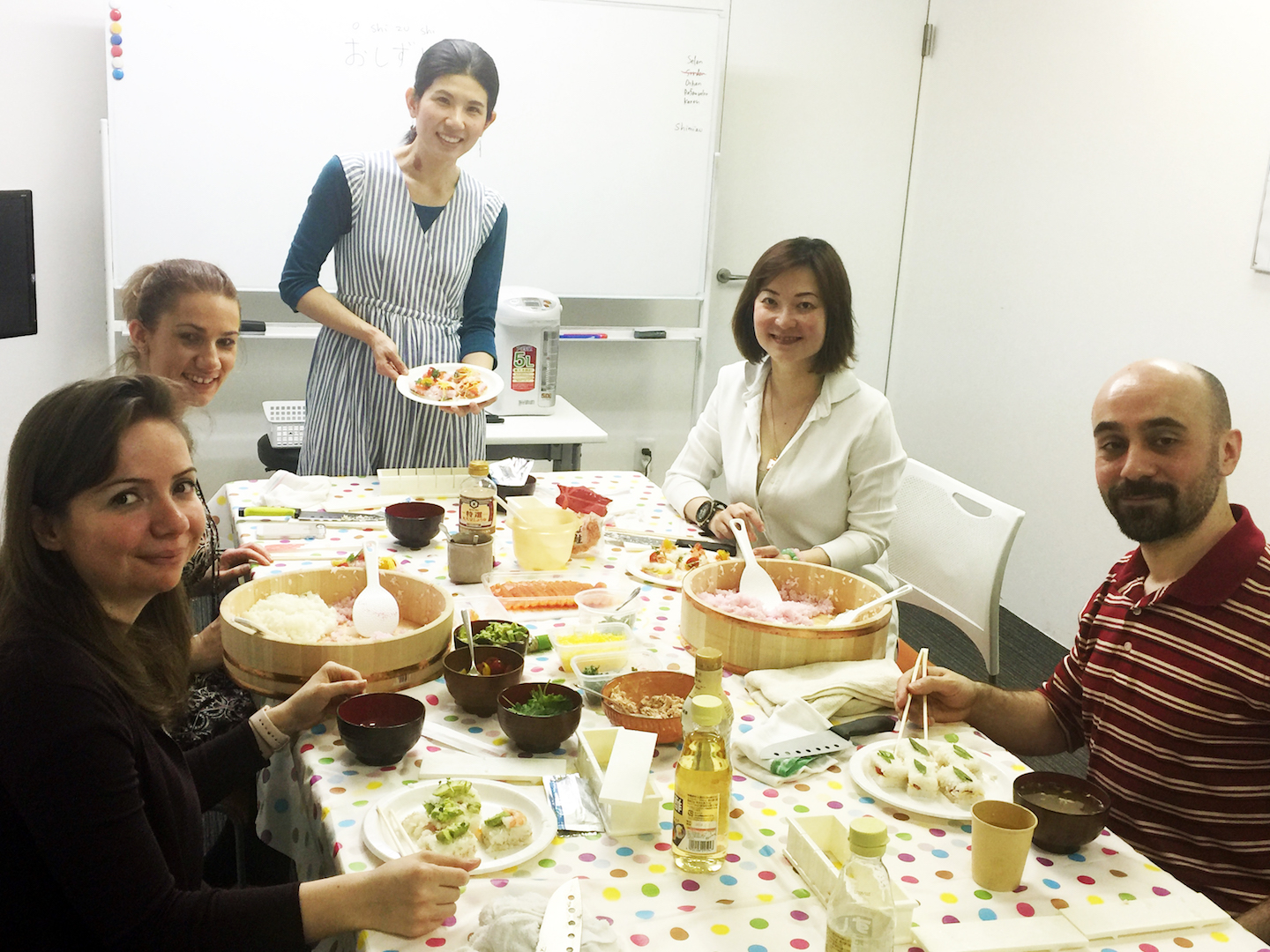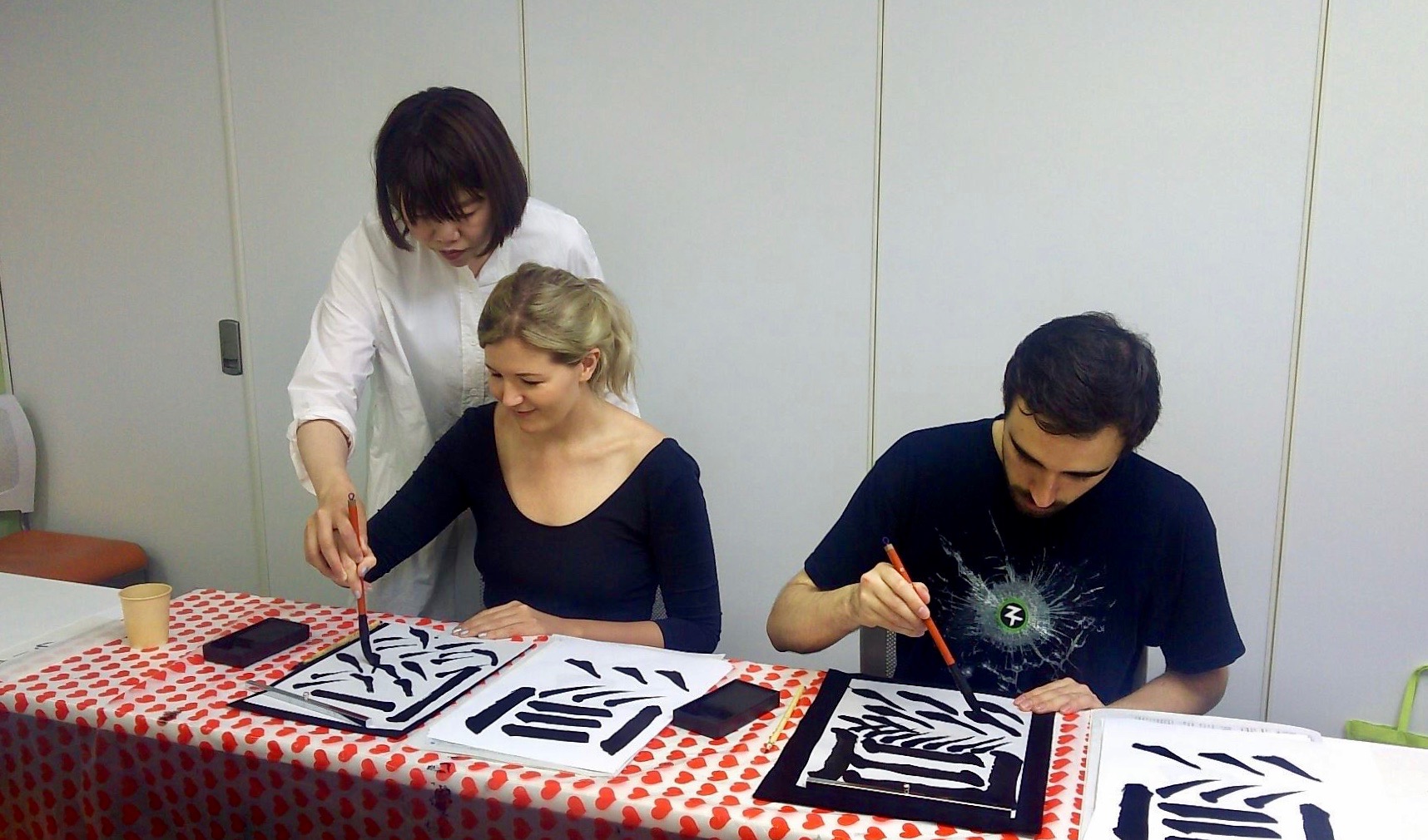This is an older post – to see our upcoming monthly events – click here
Every month we hold cultural and social events for our students and their friends to discover more about Japanese culture, meet new friends and practice Japanese. We are looking forward to seeing you there!
Lunch Tour – 8/9
Cooking Class (Oshi-Zushi) – 8/15
Beer Garden Party – 8/18
Japanese Sword Experience (Iaido) – 8/28
Calligraphy Class – 8/29
8/9 Thu: Lunch Tour in Kagurazaka Hanakagura

Every month, we organize a lunch tour at one of the many delicious restaurants in Kagurazaka area. This month, we’ll enjoy some delicious food at Hanakagura! If you want to join us make your reservation now!
![]()
- Date: Thursday, Augst 9, 2018
- 12:30 – 13:50
- Meeting at Coto Japanese Academy 1F
- ¥1500
- Hanakagura
- upto 16 people
- Staff: Mutsuki S.
8/15 Wed: Cooking Class (Oshi-Zushi)
- Date: Wednesday, Augst 15, 2018
- 12:40 ~ 13:50
- Venue: Coto Japanese Academy 1F
- ¥2500 (including material fee)
- upto 10 people
- Instructor:Emiko Shimizu
8/18 Sat: Beer Garden Party

What do you do in the summer to beat the heat? Come and enjoy our “Beer Garden Party” at Ginza Sky Beer Terrace! It will be a lot of fun and practice your Japanese!
![]()
- Date: Saturday, August 18th
- Time: 19:30 – 21:30
- Meeting at 19:00 at Ginza Sky Beer Terrace
- Address: Tokyo Kotsu Kaikan 2-10-1 Yurakucho Chiyoda Tokyo (Google Map)
- Transport: 1 min walk from Yurakucho Station (JR Yamanote Line, JR Keihin Tohoku Line, Metro Yurakucho Line)
- 5,000 yen (food and all-you-can-drink)
- Up to 60 people maximum
8/28 Tue: Japanese Sword Experience (Iaido)

A life-time opportunity to experience cutting with a real Japanese sword! Do you know Iaido?
Iaido is a Japanese martial art that “assumes” that you’re in front of a dangerous enemy. This martial art teaches you to be aware, capable of quickly drawing the sword and responding to a sudden attack along with the correct etiquette and postures to do it smoothly.
This kind of dojos rarely allows beginners to use a Japanese sword 真剣 (Shinken). Join us to hold and use a real traditional katana!
![]()
- Date: Tuesday, August 28th
- Time: 18:15-21:20
- Meeting point: 18:15 at Coto Language Academy 3F or 19:00 at the dojo (Kanda / Jinbocho)
- Fee: 5000 yen
- Number of participants: 15
- Staff: Kana Sumitani, Kaoru Michiya
8/29 Wed: Caligraphy Class
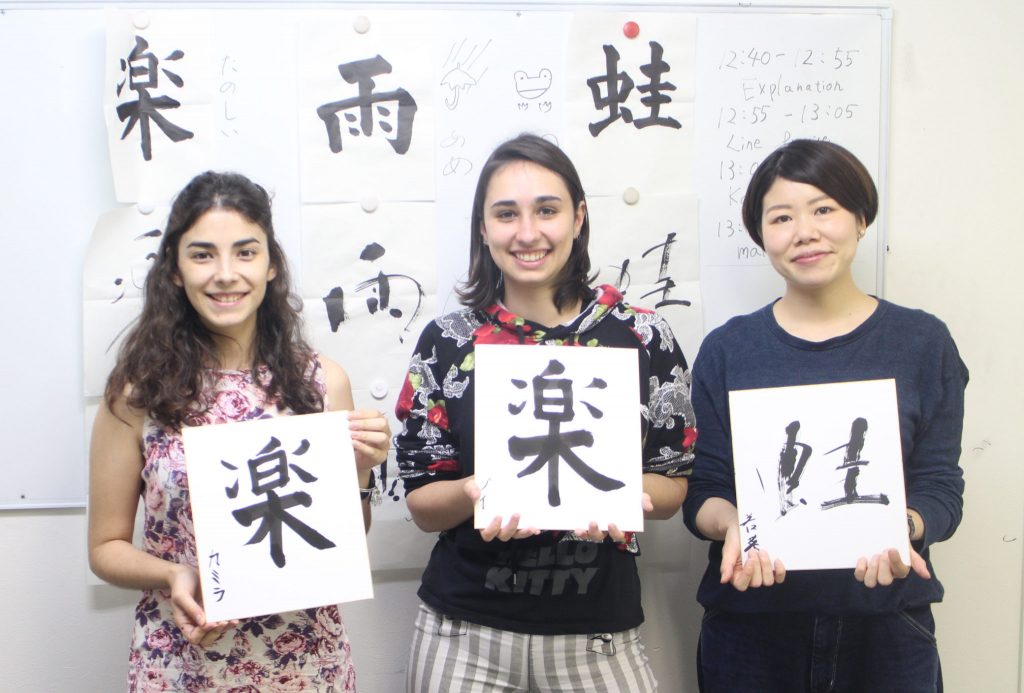
If you are interested in learning how to draw each and every stroke in the Japanese Kanji character, this event is for you! Every month, Coto Japanese Academy will hold a calligraphy class. Learn the basics of calligraphy along with the artistic way of writing kanji, you will be practicing on three characters as shown below. The instructor, Wakana Shingae, is a professional calligrapher. Grab this opportunity to experience the traditions of Japan and participate in our calligraphy class!
KANJI of this month:祭 涼 夏
- Date: Wednesday August 29, 2018
- 12:40 – 13:50
- Coto Language Academy 1F
- ¥2500
- upto 9 people
- Instructor: Wakana Shingae




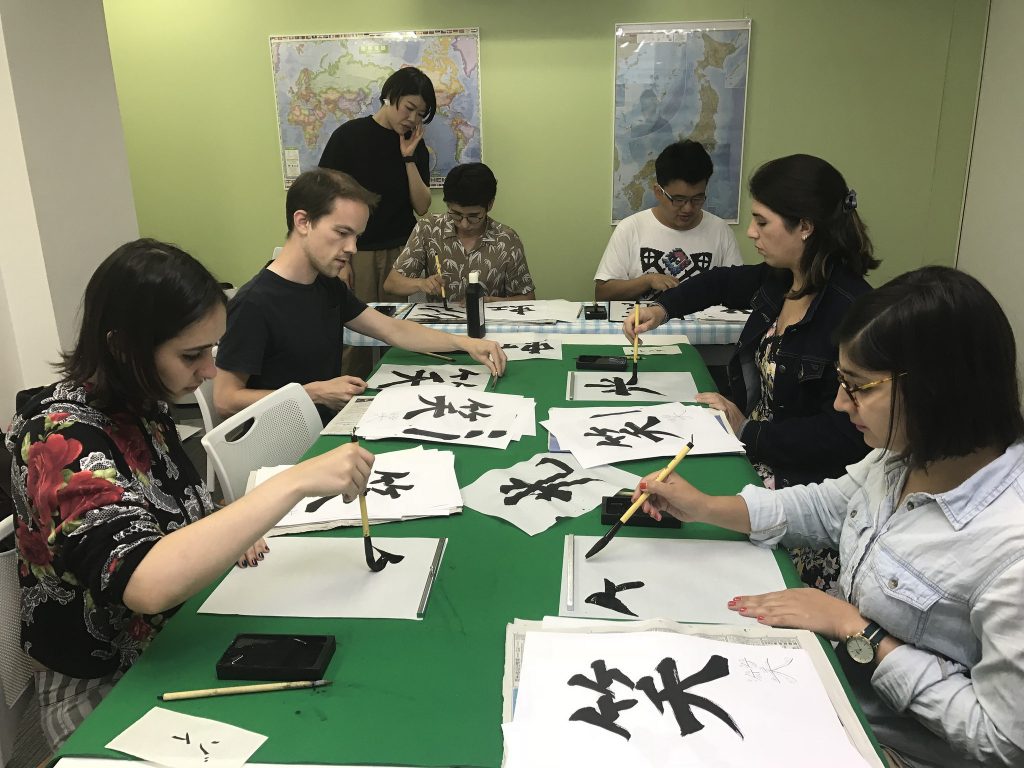


 (
(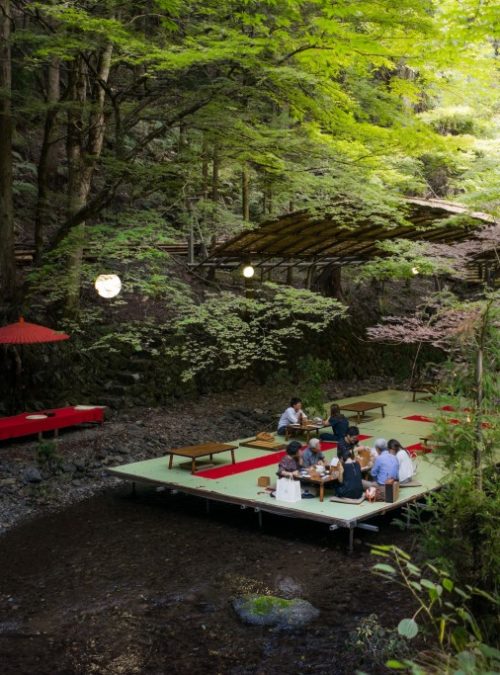





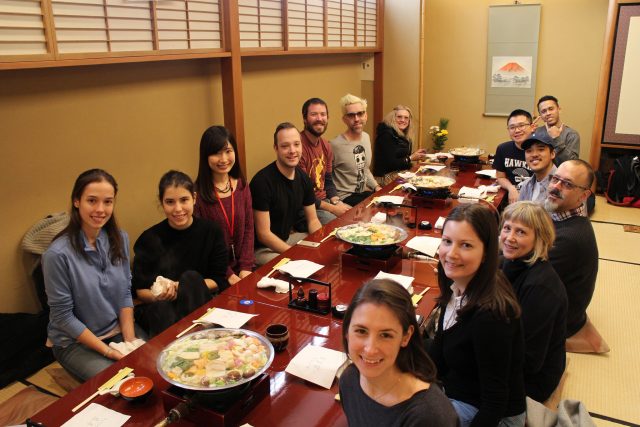
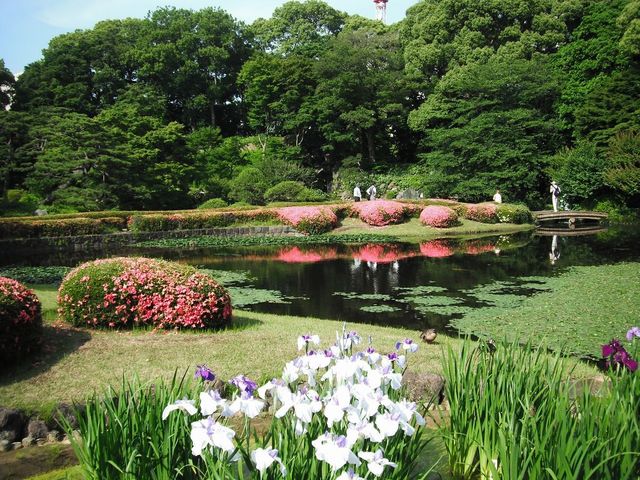
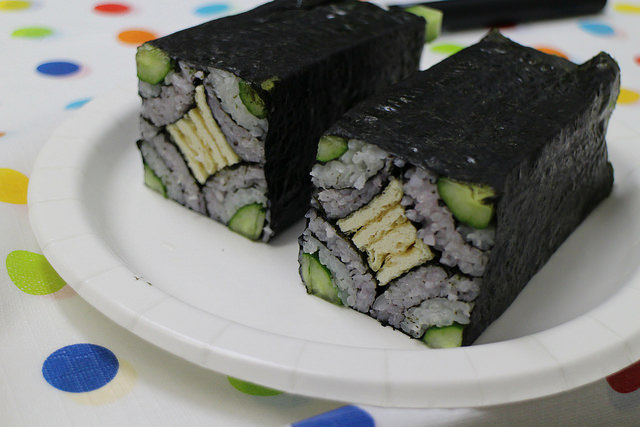
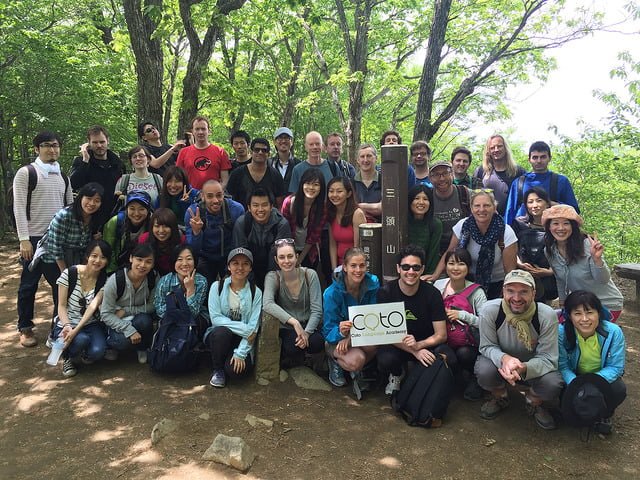
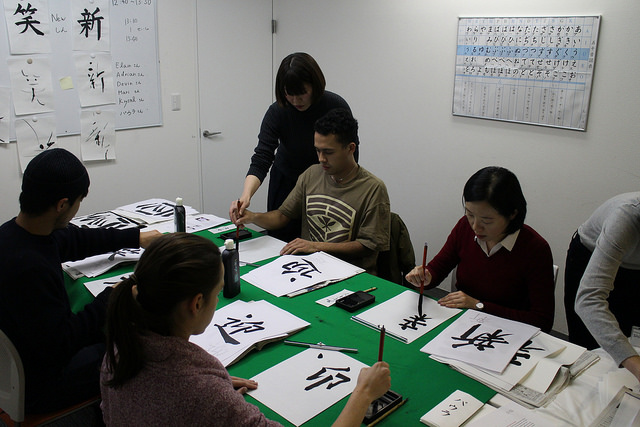

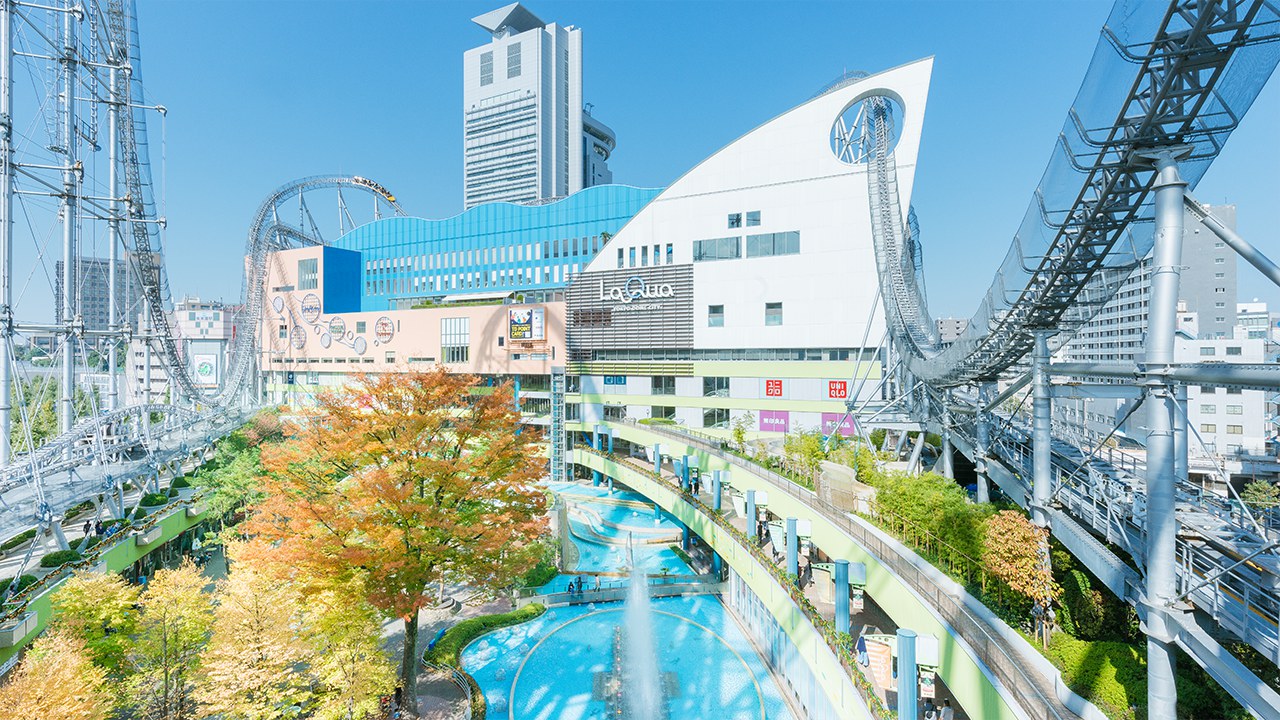 Tokyo L’Aqua Tokyo is a shopping and Onsen (温泉) Hot Spring complex that is part of Tokyo Dome city and contains 3 levels of shopping, restaurants, and rideable attractions. Nearby you can find everything from Batting Cages to
Tokyo L’Aqua Tokyo is a shopping and Onsen (温泉) Hot Spring complex that is part of Tokyo Dome city and contains 3 levels of shopping, restaurants, and rideable attractions. Nearby you can find everything from Batting Cages to 





